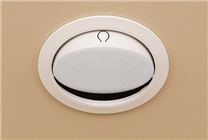The Data Consumption Dilemma of Smart Speakers
Summary:
- High Data Usage: Smart speakers like the Amazon Echo Show can consume over 4GB of data in just 24 hours, even when not actively used.
- Background Updates: These devices require constant internet connectivity for notifications, updates, and syncing with cloud services.
- Concerns About Privacy: Speculations about continuous recording and data usage raise privacy concerns among users.
On September 7, a notable case emerged on social media regarding the substantial data consumption of Amazon Echo smart speakers. Dave W. Plummer, a user who has notably contributed to the development of Windows Task Manager, reported a staggering usage of over 4GB of data within a single day from his two Amazon Echo Show devices. This revelation sheds light on an often-overlooked aspect of smart home technology: the significant data demands that these devices impose on users.
The Amazon Echo Show, equipped with a touch screen interface, serves as a multifunctional hub for smart homes, managing everything from media playback to household automation. However, its reliance on constant internet connectivity is a double-edged sword. While it provides users with real-time updates and notifications, the frequency of data transfer can elevate data consumption to alarming levels.
Despite his concerns about data usage, Plummer expressed skepticism about the device’s listening capabilities. He suggested that the high data consumption could stem from either unexplained vulnerabilities, extensive updates, or cached content—particularly since the Echo Show supports video features. He suspects that the device may be downloading content like movie trailers, rather than recording audio continuously.
A common speculation among users is that smart speakers may record audio whenever they detect activation phrases, such as "Hey, Google" or "Alexa." Even passive sound detection, which occurs when the device picks up similar sounds, could lead to data transmission for processing and analysis. This raises critical questions regarding privacy and transparency in how these devices operate, potentially leading to unintended data usage.
Many users pointed to Amazon Sidewalk, a community network leveraging Amazon devices, such as the Echo and Ring products, to enhance connectivity. While this feature offers benefits by creating a shared network for devices within close proximity, it also contributes to increased data consumption. Devices connected through Amazon Sidewalk may use the internet for collaboration, leading to higher aggregate data usage.
The implications of such high data consumption extend beyond individual users. In a world increasingly reliant on smart homes and interconnected devices, understanding how these technologies manage and consume data is crucial. Consumers ought to be aware of these dynamics to manage their internet plans effectively and maintain control over their privacy.
Key Takeaways
-
Informed Usage: Users investing in smart home technology should review their data plans and device settings to monitor and manage data consumption effectively.
-
Device Features: Smart speakers like the Amazon Echo Show not only function as interactive interfaces but also necessitate regular updates and content management, often contributing to excessive data usage.
- Privacy Considerations: As data collection practices continue to evolve within the realm of interconnected devices, understanding the implications of audio recording and community networks is essential for protecting user privacy.
In conclusion, as smart technology permeates more aspects of everyday life, it is essential for users to remain vigilant about data consumption and privacy policies associated with their devices. As discussions surrounding these topics continue to gain traction, manufacturers like Amazon will likely face pressure to enhance transparency and security in their smart home technologies.









